How did a Latin translation change the course of Western Christianity?
For centuries, millions of believers read, sang, and preached the Word of God in a single version: the Vulgate.
But what made it so influential, so contested, and so central to biblical history?
In this article, you'll discover why the Vulgate was not just a translation, but a spiritual and cultural revolution.
Introduction to the Vulgate
To understand the development of the Bible and its influence on Western culture, it is essential to know the Vulgate.
This Latin version became the official Bible of the Church for over a thousand years and shaped Christian thought, education, and spirituality for generations.
Here I explain in detail the key aspects that make it unique:
1. What is the Vulgate and why is it so important in biblical history?
The Vulgate is a translation of the Bible into Latin made mainly by Saint Jerome at the end of the 4th century AD
- Official translation:
It was commissioned by Pope Damasus I to unify and correct the multiple existing Latin translations, known as “Vetus Latina.” - Accessibility to the village:
The term "Vulgate" comes from Latin Vulgate version, which means “common version,” because it was intended for the use of the common people, in contrast to Greek or Hebrew, languages that were less accessible at the time. - Spiritual and doctrinal value:
The Vulgate became the doctrinal and liturgical basis of the Catholic Church, and its influence lasted even during the Protestant Reformation and beyond.
2. The need for a Latin Bible for the ancient world
The Roman world of the 4th century spoke Latin as its common language, while the Scriptures were written in Hebrew, Aramaic, and Greek.
- Confusion between versions:
Previous Latin translations were inconsistent, incomplete, and error-ridden, leading to confusion in liturgy and biblical study. - Theological unity:
A single authoritative version in a common language allowed for more consistent teaching throughout the Western Church. - Facilitating expansion:
With Latin as the official language of the Roman Empire, a Bible in this language facilitated evangelization, theological formation, and liturgical life in Europe.
3. Brief overview of the cultural and theological impact of the Vulgate
The Vulgate was not just a religious text, but a pillar of European Christian civilization.
- Literary and educational influence:
For centuries, the Vulgate was the only biblical text known to monks, theologians, and scholars. It became the central text of medieval education. - Doctrinal authority:
The Council of Trent (1546) declared the Vulgate as the official version of the Catholic Church, confirming its use in liturgy, preaching and doctrine. - Lasting legacy:
Many theological, legal, and literary expressions come directly from the Vulgate. Even today, it remains a scholarly reference for biblical and patristic studies.
The Vulgate is much more than a translation:
It is a monumental work that unified the Church, shaped Western culture, and remains key to understanding the development of Christianity and European thought.
Applying the quick template #HierarchizesTitles, here you have the content completely hierarchized from H2 until H4 as appropriate, keeping the original numbering and bullets intact:
Historical context of the Vulgate
The Vulgate was born in a context of imperial expansion, linguistic diversity and the need for theological unity.
Latin, Greek, and other languages coexisted in an Empire that required a clear, faithful, and accessible biblical translation.
Here I explain how this historical moment paved the way for the Vulgate:
1. The Roman Empire and linguistic diversity
In the 4th century, the Roman Empire was vast and culturally diverse.
- Predominant languages:
Although Greek was common in the east of the empire, Latin dominated the west.
Furthermore, the Scriptures were originally in Hebrew (OT), Aramaic (fragments), and Greek (NT). - Text fragmentation:
There were multiple Greek Bible versions (Septuagint) and several Latin translations without a unified standard, which generated liturgical and doctrinal discrepancies. - Need for stability:
The Church needed a clear and uniform translation that could be read and understood throughout the empire, especially in the Latin-speaking provinces.
2. The role of Latin as an ecclesiastical and civil language
Latin was not only the administrative language of the Empire, but also the emerging language of the Western Church.
- Common language in the West:
It was the language of the ruling class, the legal system, the military, and formal education. - Ecclesiastical adoption:
Over time, Christian communities began to celebrate the liturgy in Latin, especially in Rome and its surroundings. - Unity Tool:
A Latin Bible would allow for better doctrinal understanding, greater pastoral cohesion, and uniform teaching across all Latin churches.
3. The translations prior to the Vulgate: the Vetus Latina
Before the Vulgate, there was a group of Latin translations known as Vetus Latina.
- Characteristics:
These versions were translations from Greek, not from the original Hebrew or Aramaic. They were loose, inconsistent, and often contradictory. - Limited use:
They were used in different regions, but there was no authorized or standard version. - Reason for a new version:
The confusion and errors present in the Vetus Latina led Pope Damasus I to request a complete and faithful revision of the Scriptures.
That task was entrusted to Jerome.
Saint Jerome and the creation of the Vulgate
Behind the Vulgate there is a key figure: Saint Jerome.
This scholar dedicated his life to studying the original languages of the Bible and producing a translation that would change the course of Christian history.
1. Who was Saint Jerome and his intellectual preparation
Jerome (c. 347–420 AD) was one of the most notable intellectuals of his time.
- Academic training:
He studied rhetoric, grammar, and philosophy in Rome. He became a master of Latin, Greek, and later Hebrew. - Ascetic life:
After a profound conversion, he devoted himself to monastic life and in-depth biblical study. - Commitment to the truth:
He was known for his strong temperament, his love of textual accuracy, and his fervent desire for faithfulness to the Scriptures.
2. The commission of Pope Damasus I
In 382 AD, Pope Damasus I commissioned Jerome to produce a new biblical translation.
- Aim:
Correct existing versions and produce a Latin Bible to be used officially throughout the Church. - First step:
Jerome began with a revision of the Gospels, followed by the rest of the New Testament and, subsequently, the Old Testament from the original Hebrew.
3. Method and sources used by Jerome to translate
Jerome applied a rigorous method to ensure fidelity to the original text.
- Translation from the original languages:
Unlike earlier versions, Jerome used Hebrew directly for the Old Testament and Greek for the New. - Textual criticism:
He compared different manuscripts, consulted with Jewish rabbis, and revised previous interpretations to achieve greater accuracy. - Literary and theological spirit:
He balanced fidelity to the text with the beauty and clarity of classical Latin.
4. Linguistic and theological challenges faced by Jerome
The task was neither simple nor free from controversy.
- Doctrinal pressure:
Some criticized Jerome for abandoning the Septuagint (the Greek version venerated in many Christian communities). - Difficulties of Hebrew:
Hebrew was a language poorly mastered by Latin Christians, which forced Jerome to learn it from scratch with the help of Jewish scholars. - Ecclesiastical criticism:
Many in his time rejected the changes he introduced as too radical.
However, over time, his version was accepted by the Church and canonized as the official version.
Saint Jerome not only translated the Bible, but also laid a solid foundation for Western theology.
Thanks to their efforts, millions have access to the Word of God in an understandable language.
Content and structure of the Vulgate
The Vulgate is notable not only for its accurate translation, but also for the collection of books it includes and its unique structure.
This version consolidated the canon used by the Latin Church for centuries and left a profound mark on Western Christian theology.
Here we explore its key components:
1. Books included in the Vulgate: canonical and deuterocanonical
The Vulgate contains all the books recognized as Sacred Scripture by the Catholic Church, both the Old and New Testaments.
– Old Testament:
It includes the 39 books of the Hebrew canon plus the deuterocanonical books, such as Tobit, Judith, Wisdom, Ecclesiasticus, Baruch, 1 and 2 Maccabees, and additions to Esther and Daniel.
– New Testament:
Contains the 27 canonical books accepted by all Christian traditions.
– Order and arrangement:
Jerome organized the books in a logical and pedagogical manner, beginning with the Pentateuch, followed by the historical, poetic, and prophetic texts, and concluding with the New Testament writings.
2. Differences between the Vulgate and other biblical versions
The Vulgate is markedly different from other translations, both in content and theological approach.
– Original source:
While the Septuagint translates the Old Testament from Hebrew into Greek, and many modern versions from Hebrew directly, Jerome translated most from Hebrew into Latin, with philological precision.
– Inclusion of books:
It contains the deuterocanonical texts, rejected by the Protestant reformers and absent in many evangelical Bibles.
– Terminology and style:
The Vulgate uses elegant yet accessible Latin. Its terminology influenced centuries of doctrine, art, and preaching.
3. The Old Testament in Hebrew and the New Testament in Greek
Jerome took a revolutionary approach by using the original languages directly for his translation.
– Old Testament:
Despite criticism, he chose the Hebrew text as his basis instead of the Septuagint.
This represented a return to the original sources, something unusual for its time.
– New Testament:
He used already circulating Greek versions and compared them with ancient manuscripts to correct errors, clarify expressions, and ensure doctrinal consistency.
– Academic rigor:
This method raised the standard of biblical exegesis and gave rise to a more critical and profound tradition of study in the Church.
Reception and diffusion of the Vulgate
The Vulgate was not immediately received with universal enthusiasm, but over time it became the most widely read, copied, and influential Bible in the Western world.
Its spread marked a before and after in the history of Christianity.
1. Early acceptance by the Church
Although its reception was gradual, the Church gradually recognized its value and authority.
– Liturgical use:
Over time, the Vulgate became the standard text for readings in the Latin liturgy.
– Doctrinal influence:
By providing a uniform basis for preaching and teaching, it helped establish a coherent theology throughout the Christian West.
– Official canonization:
The Council of Trent (1546) declared the Vulgate to be the authentic version of the Bible in the Catholic Church, cementing its status for centuries.
2. Reactions of other Christian scholars and copyist monks
The Vulgate also faced opposition and skepticism from those accustomed to earlier versions.
– Initial criticisms:
Many clerics and monks were suspicious of the changes introduced by Jerome, especially in replacing traditional passages from the Vetus Latina.
– Progressive defense:
As his clarity and coherence proved useful, he gained respect among scholars and church leaders.
– Monastic work:
Copyist monks played a vital role in its preservation, copying thousands of copies by hand over centuries in European monasteries.
3. Expansion throughout Europe during the Middle Ages
The Vulgate became the dominant Bible of the medieval Western world.
– Educational influence:
It was the central text in medieval monastic schools and universities, forming the basis of Christian education.
– Translation and glosses:
Although it was in Latin, many parts of the Vulgate were accompanied by marginal translations or commentaries in vernacular languages.
– Spiritual unity:
Its widespread use allowed the Western Church to share a common biblical foundation, consolidating faith in times of political and cultural fragmentation.
Have you ever wondered why the Church chose this version as its official Bible for centuries?
The Vulgate and the Catholic Church
For centuries, the Vulgate was not just another translation: it was the foundation upon which the doctrine, liturgy, and teaching of the Catholic Church were built.
Its influence was consolidated in councils, spread to monasteries, and remained the norm even in times of reform.
Let's see how his authority was formalized and what its ecclesial impact was:
1. Declaration as the official version of the Council of Trent
The Council of Trent (1545–1563) played a decisive role in the history of the Vulgate.
– Reform context:
In the midst of the Protestant Reformation, it was necessary for the Catholic Church to define its biblical basis in a clear and unified manner.
– Formal canonization:
In 1546, the Council declared the Vulgate the “only authentic version” for reading, teaching, and preaching in the Church.
– Pastoral and theological objective:
This decision ensured that all faithful and clergy had a common reference, protecting doctrinal unity against the proliferation of new translations.
2. Its role in liturgy, theology and doctrinal teaching
The Vulgate was much more than a reference text; it was integrated into all levels of ecclesial life.
– Liturgy:
The psalms, gospels, letters and other readings were proclaimed in Latin directly from the Vulgate for centuries.
– Theology:
The great doctors of the Church, such as Thomas Aquinas and Augustine of Hippo, quoted and commented on the Vulgate in their masterly works.
– Catechesis and formation:
Seminarians, theologians, and priests studied it as a primary source of revelation, and its language shaped the doctrinal terminology of the Church.
3. Differences with Protestant versions of the Bible
The Vulgate was also a dividing line between Catholics and Protestants regarding the canon and biblical translation.
– Extended Canon:
It includes deuterocanonical books (such as Tobit, Wisdom, and 1 and 2 Maccabees) that were excluded by Protestant translations after the Reformation.
– Translation base:
While the Vulgate was translated from Hebrew and Greek into Latin, many Protestant Bibles were translated directly from the Masoretic Hebrew or the Septuagint, resulting in variations in content and tone.
– Doctrinal approach:
The liturgical and theological use of the Vulgate is marked by a Catholic sacramental and ecclesial vision, distinct from the individualistic approach of many evangelical versions.
Important reforms and editions of the Vulgate
Over time, the Church recognized the need to review, correct, and update the Vulgate without losing its essence.
These reforms guaranteed its accuracy, academic relevance and fidelity to the original text.
1. The Sixtine and Clementine Vulgate
These two editions emerged after the Council of Trent to standardize the Vulgate.
– Sistine Vulgate (1590):
Sponsored by Pope Sixtus V, it was printed with papal authority, but contained typographical and content errors that caused confusion.
– Clementine Vulgate (1592):
Commissioned by Pope Clement VIII, it corrected the previous version and became the official edition for nearly 400 years.
It was the Vulgate used by the Church until the 20th century.
2. The Stuttgart edition and the Nova Vulgata
With the advancement of textual criticism, more scientific and modern editions emerged.
– Stuttgart edition (1969):
Produced by the German Bible Society, it is a critical edition used primarily in academic circles.
Includes critical apparatus and comparison with ancient manuscripts.
– Nova Vulgata (1979):
Official revision promulgated by Pope John Paul II.
It is the version currently authorized by the Catholic Church for liturgical and doctrinal use.
It is based on the oldest manuscripts and the original Hebrew and Greek texts.
3. Modern updates and their academic relevance
The Vulgate continues to be an object of study, translation and reflection.
– Continuous research:
Current biblical studies consider the Vulgate a valuable testimony to the early reception of the biblical text in the West.
– Comparative tool:
It is used in modern translations to compare how certain passages were understood in the Latin tradition.
– Historic bridge:
The Vulgate provides an understanding of how Christian doctrine, liturgy, and theology developed over more than a thousand years of history.
Have you ever wondered how a translation can shape the theology of an entire civilization?
The cultural and spiritual legacy of the Vulgate
Beyond its value as a biblical translation, the Vulgate left a profound mark on the spiritual, intellectual and artistic history of Europe.
Its influence transcended the religious sphere, shaping Western Christian cultural expressions and thought for centuries.
Here are some of his most notable legacies:
1. Influence on art, literature and sacred music
The Vulgate nourished the creative soul of the West, becoming a source of inspiration for artists of all disciplines.
– Sacred art:
Passages from the Vulgate were depicted in frescoes, stained glass, and altarpieces, bringing biblical scenes to life in churches and cathedrals throughout Europe.
– Classical Christian literature:
Authors such as Dante Alighieri, Thomas à Kempis and Saint Augustine based their theological and poetic works on the Vulgate.
– Liturgical music:
Hymns such as the “Magnificat,” the “Gloria,” and the “Te Deum” are directly based on texts from the Vulgate, influencing composers such as Bach, Handel, and Palestrina.
2. The Vulgate as a tool of medieval evangelization
During the Middle Ages, the Vulgate was a fundamental instrument for spreading Christianity in Europe.
– Training of clerics and missionaries:
Monasteries used the Vulgate to teach Latin, theology, and morals, training those who would bring the gospel to non-Christianized peoples.
– Translation and adaptation:
Although the Vulgate was in Latin, preachers explained it in vernacular languages, sowing the Word in the hearts of the people.
– Handwritten dissemination:
Thousands of copies were handwritten by monks in scriptoriums, preserving and transmitting the biblical message throughout generations.
3. Its impact on the formation of Western Christian thought
The Vulgate structured Europe's worldview for over a thousand years.
– Doctrine and theology:
The key terms of Christian theology (grace, faith, sin, redemption) were established through their formulation in the Vulgate.
– Christian law and morality:
Many principles of canon law and Western ethical thought are based on formulations taken from their texts.
– Medieval education:
In the emerging universities, the Vulgate was the basic text for studying not only theology, but also philosophy, law, and rhetoric.
Comparison with other Bible translations
To fully understand the value of the Vulgate, it is helpful to compare it with other important translations, both Jewish and Christian.
Each has its own context, purpose, and linguistic emphasis, which enriches the reader's biblical experience.
1. Differences with the Septuagint and the Masoretic Text
These two sources have influenced different branches of Christianity and present notable particularities.
– Septuagint (LXX):
Greek version of the Old Testament used primarily by Eastern Christians. It includes deuterocanonical books and has textual differences in Genesis, Psalms, and other texts.
– Masoretic Text:
The basis of the Hebrew Old Testament used by Jews and Protestants. Its canon is smaller and has a vowel system that did not exist in Jerome's time.
– Jerome’s Election:
He preferred the Hebrew text over the Septuagint, which was revolutionary in his time and caused intense theological debates.
2. Comparison with Protestant translations (Reina-Valera, etc.)
The translations born during the Reformation have different approaches, especially in canon and theology.
– Canon:
The Reina-Valera and other Protestant versions exclude the deuterocanonical books present in the Vulgate.
– Doctrinal approach:
Reformed translations tend to have a more marked soteriological orientation (justification by faith, for example).
– Translation style:
Many Protestant versions strive for literal fidelity to the original text, while the Vulgate balances accuracy with classical literary style.
3. Advantages and limitations of the Vulgate for the modern reader
Although its beauty and historical value are indisputable, the Vulgate also presents current challenges.
- Advantages:
It offers a theological perspective deeply rooted in the Catholic tradition.
It allows us to study how the Scriptures were understood for over a thousand years.
His classical Latin style is appreciated for its poetic and doctrinal richness.
– Limitations:
It is not accessible to those who do not read Latin.
Some translations may reflect specific theological debates of the time.
Requires comparison with modern manuscripts for advanced exegetical studies.
How to study the Vulgate today
Although written in Latin, the Vulgate remains an invaluable source for biblical, devotional, and theological studies.
Thanks to digital resources and modern bilingual editions, it's possible to access its richness even without mastering the original language.
Here I show you how to take advantage of it effectively today:
1. Recommendations for non-Latin readers
It is not necessary to know Latin to benefit from the spiritual and doctrinal content of the Vulgate.
– Parallel editions:
Look for Bibles that include the Latin text along with a reliable translation in your language. This allows you to compare key terms without losing context.
– Guided reading:
Rely on Bible commentaries that explain the Vulgate verse by verse. Many are available online or in accessible books for all levels.
– Start with the Psalms or the Gospels:
They are texts rich in spirituality and with more familiar language, ideal for getting started.
2. Online and parallel tools to compare versions
There are many free, high-quality resources for exploring the Vulgate alongside other translations.
– BibleGateway.com and Bible.com:
They offer the Vulgate along with versions in Spanish, English, Greek, and Hebrew, making comparison easy.
– Clerus Bible (Vatican):
Official website of the Church that presents the Vulgate along with patristic commentaries and Magisterial documents.
– Latin Vulgate (Duoay-Rheims Parallel):
Available on specialized sites, it allows you to view the Latin text alongside its traditional English Catholic translation.
3. Academic, theological and devotional use of the Vulgate
The Vulgate is not only studied in universities: it can also enrich the spiritual life of the believer.
– Theological studies:
Scholars use it to analyze how doctrines such as justification, the incarnation, and the Trinity were understood in the early centuries of the Church.
– Personal devotion:
Many believers pray the Psalms directly from the Vulgate as an exercise in deep biblical meditation.
– Doctrinal training:
Its rigorous language helps to better understand key concepts such as thanks, faith, lex, which have shaped Christian theology for centuries.
Recommended books on the Vulgate
To delve deeper, these books offer historical context, scholarly analysis, and valuable study tools:
1. “The Vulgate Bible” – Norton Critical Editions
A bilingual edition with a scholarly introduction, historical context, and detailed commentary.
– Contains explanatory notes, cross-references and critical analysis.
– Ideal for students of theology, Church history, and biblical literature.
2. “Jerome's Hebrew Questions on Genesis” – Translated by John C. Reumann
Translation and analysis of one of Saint Jerome's key works on his translation process.
– Illustrates how Jerome worked directly with the Hebrew text.
– It helps to understand his linguistic and theological decisions when constructing the Vulgate.
3. “The Latin Vulgate: Introduction and Study” – Academic edition in Spanish
A profound work for Spanish speakers interested in the origin, impact, and textual analysis of the Vulgate.
– Explain the linguistic, historical and spiritual aspects of the text.
– Useful for both teachers and devotional readers who want context.
For Christian entrepreneurs who want to impact with purpose
If Saint Jerome translated the Bible so others could know God, you too can use your business to enlighten the world.
It's not just about selling, it's about serving with eternal purpose.
Here are three tools to help you build your business with Kingdom values:
🚀 NippyLaunch.com – Transform your vision into a professional platform
Create your website, app, or digital academy with comprehensive solutions designed for Christian entrepreneurs.
Launch your project with a modern design, premium features, and support focused on your impact goals.
📈 CleefCompany.com – Ethical and effective advertising with biblical principles
Take your business to the next level without sacrificing your integrity.
Get advertising campaigns aligned with your faith, focused on real results, and built on a foundation of honesty, clarity, and purpose.
🧮 CalculatorCCH.com – Make decisions with divine wisdom
Access more than 600 calculators to optimize your business, financial, and healthcare decisions.
They are free tools created for Christians who want to manage well what God has placed in their hands.
Frequently Asked Questions about the Vulgate
What does the word “Vulgate” mean?
“Vulgate” comes from Latin vulgate edition, which means “popular” or “widespread” edition. It refers to the Bible translated into common popular Latin.
Who translated the Vulgate and in what year?
Saint Jerome began his translation in 382 AD, working for over 20 years. He translated directly from Hebrew and Greek into Latin.
What is the difference between the Vulgate and other Bibles?
The Vulgate was the first official Latin translation of the complete Bible, and its structure and style profoundly influenced the Catholic Church.
Does the Vulgate include the deuterocanonical books?
Yes, it includes books such as Tobit, Wisdom, and 1-2 Maccabees, which are recognized by the Catholic Church but not accepted in many Protestant versions.
Why was it important for the Catholic Church?
It unified biblical reading and teaching throughout the Latin Church. It was declared the official version at the Council of Trent and used for centuries as a doctrinal basis.
Is the Vulgate still used today?
Yes. The New Vulgate, a revised edition published in 1979, remains the official version for liturgical use in the Catholic Church.
Can I read the Vulgate if I don't know Latin?
Yes. There are bilingual editions, commentaries, and digital resources that make it easier to study, even for those who don't speak Latin.
What is the relationship between the Vulgate and the Council of Trent?
The Council declared the Vulgate as the authentic and normative version of the Bible for the Catholic Church, consolidating its authority.
What are the current versions based on the Vulgate?
The New Vulgate and some modern Catholic translations into vernacular languages are based partially or wholly on the Vulgate, especially in liturgical contexts.
What is the difference between the Vulgate and the Jerusalem Bible?
The Vulgate is a Latin translation from the original texts, while the Jerusalem Bible is a modern translation based directly on Hebrew and Greek manuscripts, with a more critical and academic approach.
Conclusion
The Vulgate is not simply an ancient biblical translation; it is a doorway into the spiritual soul of centuries of Christian faith.
It was the bridge that allowed millions to know God in an accessible language, and its influence lives on in theology, liturgy, and culture.
To study it today is to rediscover how the Word of God can shape entire civilizations when it is carried out with fidelity and purpose.
Did you already know the history of the Vulgate?
Would you be willing to explore it for yourself and share what you discover?
I read you in the comments.
Discover How the Bible Can Transform Your Life
- Bible Study – explore the teachings of the Bible and find answers to life’s challenges.
- Fundamental Beliefs – delves into the principles that have guided millions through the centuries.
- Spiritual Growth – Strengthen your faith with studies designed to bring you closer to God.

Discover How the Bible Can Transform Your Life
- Bible Study – explore the teachings of the Bible and find answers to life’s challenges.
- Fundamental Beliefs – delves into the principles that have guided millions through the centuries.
- Spiritual Growth – Strengthen your faith with studies designed to bring you closer to God.


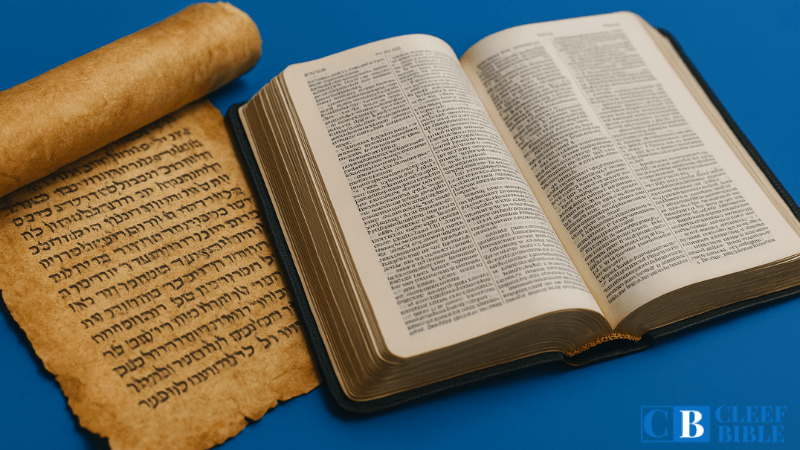



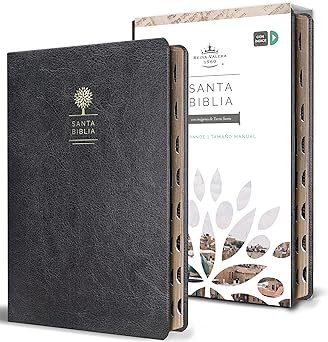








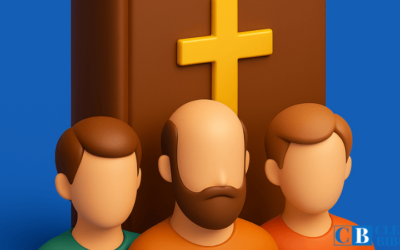

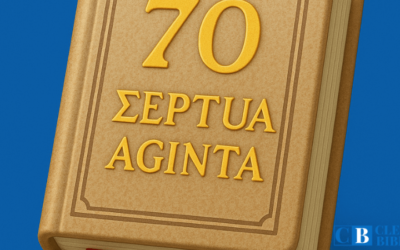







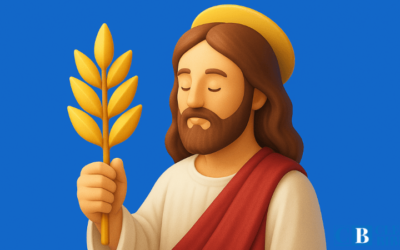

0 Comments